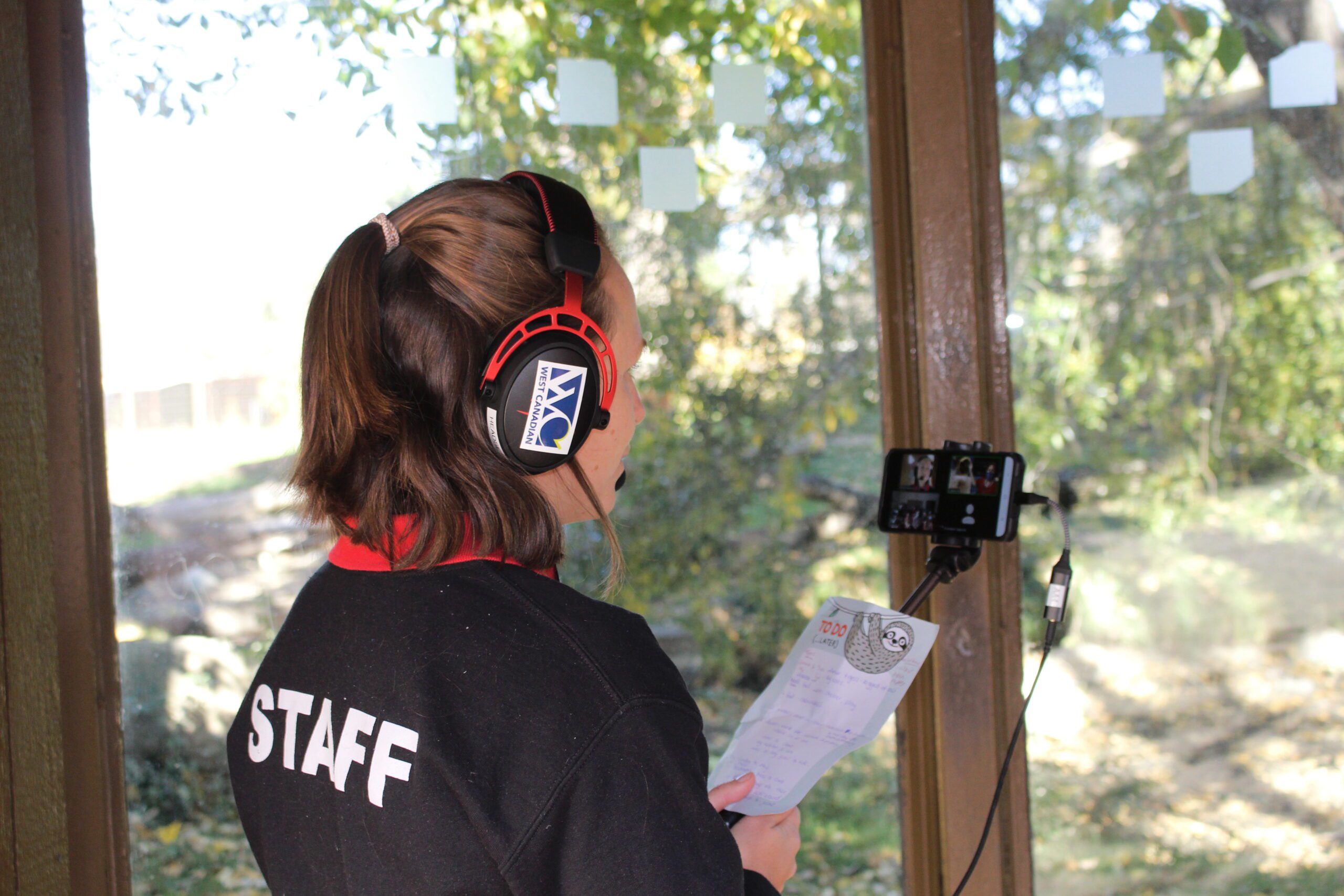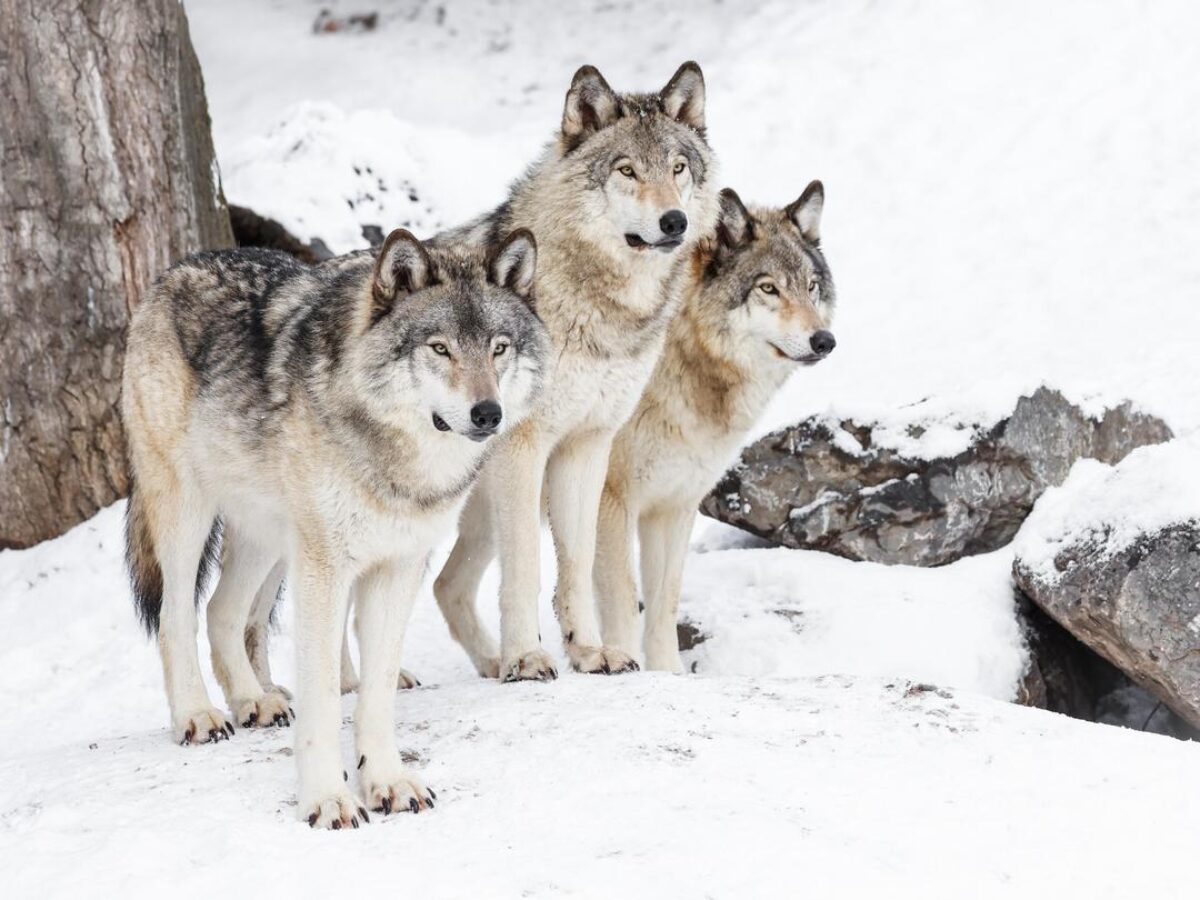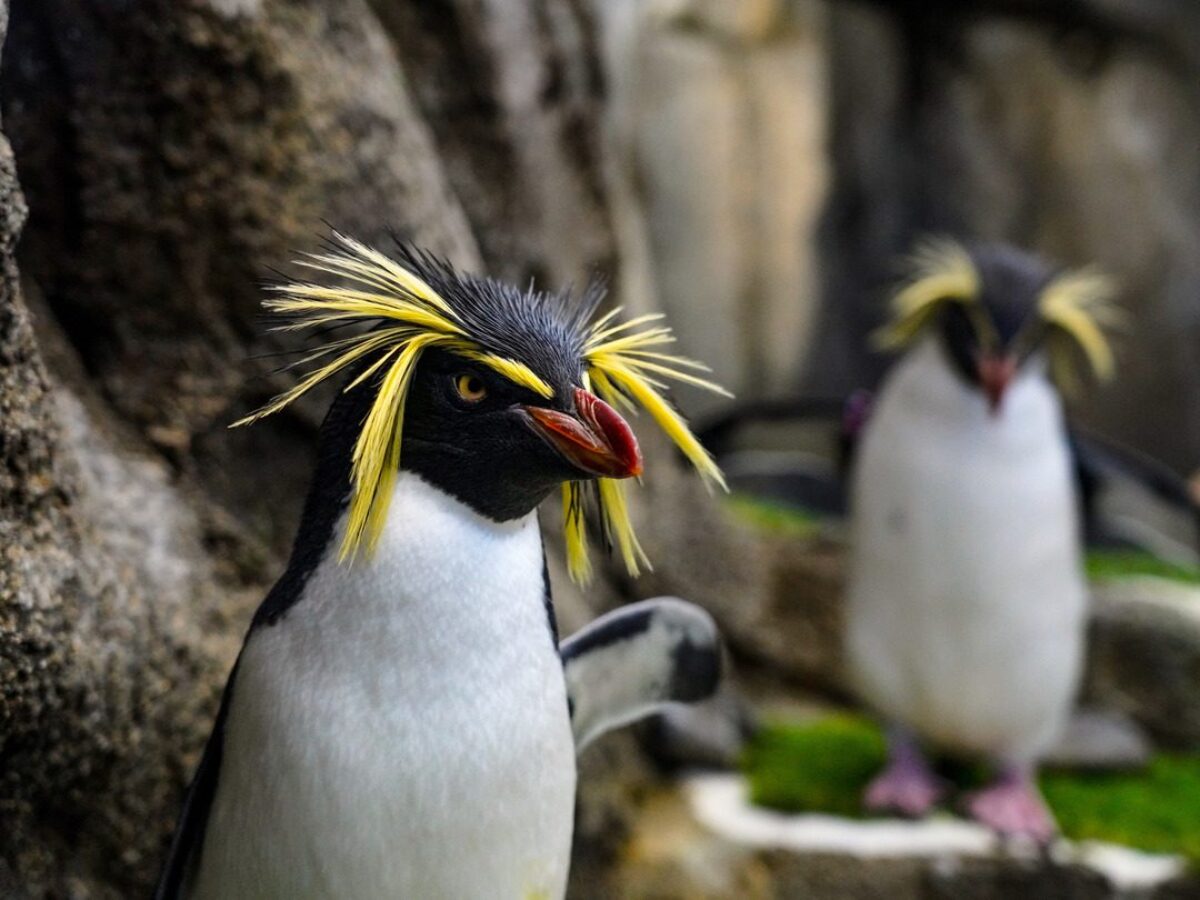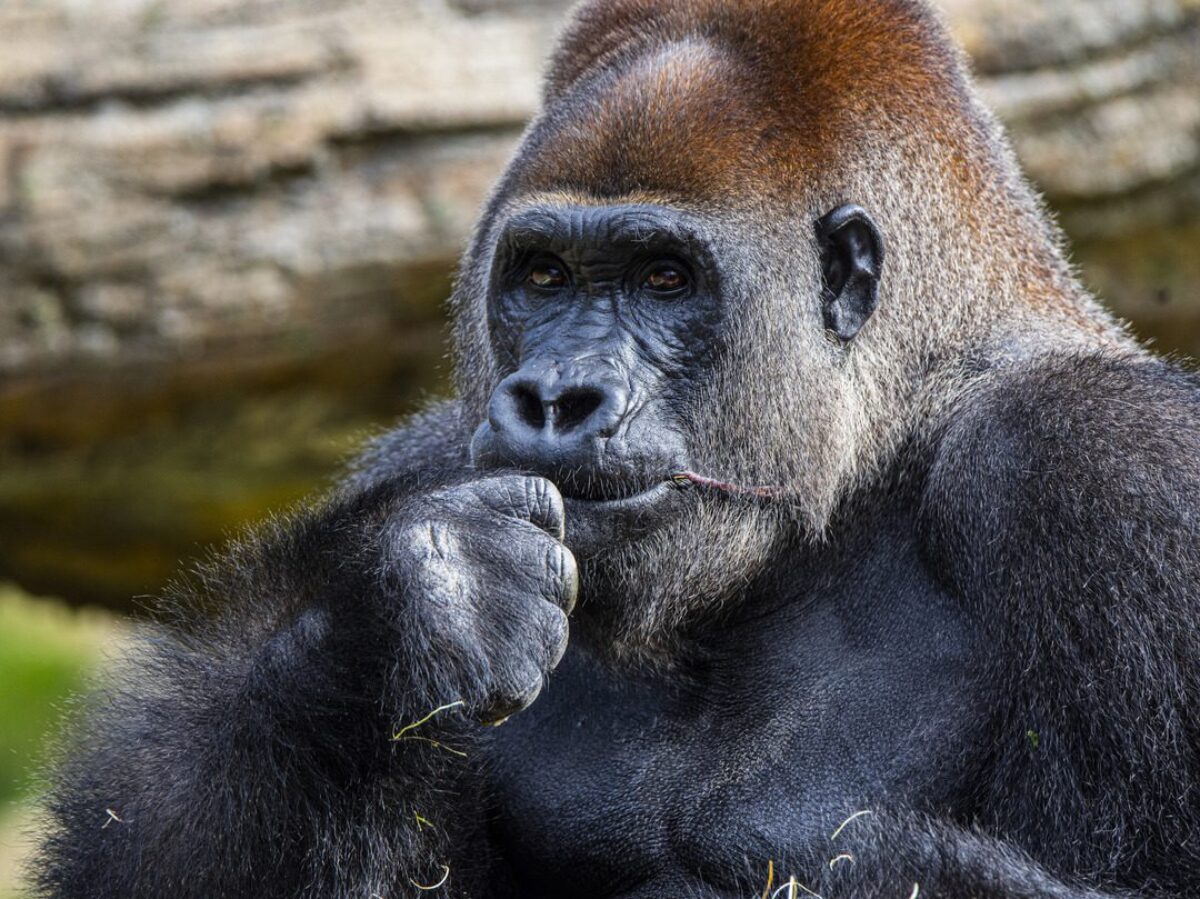
Virtual Program Information
Program Information
Length: Up to 60 minutes
Curriculum Connections: Kindergarten to grade 12, variable based on grade. Please let us know what you would like to focus on.
Program Cost: $125
Availability: Fridays at 9:00 a.m., 10:30 a.m., and 1:00 p.m. from December 2023 – February 2024, and by request from September 2023 – March 2024.
Capacity: Up to 37 students



Virtual Safari: Exploration Asia
Discover the spectacular animals that call Asia home while being toured by a knowledgeable conservation educator. Our educators will outline curricular connections specific to your student’s level. On this walking safari, explore predator-prey relationships, social dynamics, adaptations for extreme environments, and human impacts. Animals observed may include Amur tigers, Malayan tapirs, white-handed gibbons, red pandas, snow leopards, Japanese macaques, and Bactrian camels.
Grades: Kindergarten to grade 12
Length: 60 minutes
Program Times: 9:00am, 10:30am, 1:00pm
Capacity: Up to 37 students
Cost: $125
Curricular Connections
Kindergarten
- Demonstrate curiosity, interest, and a willingness to learn about the environment and community
Grade 1
- Describe some common living things and identify needs of those living things
Grade 2
- Describe the general structure and life habits of small crawling and flying animals, e.g. insects, spiders, worms, slugs; apply this knowledge to interpret local species that have been observed
Grade 3
- Describe the appearances and life cycles of some common animals and identify their adaptations to different environments
- Identify requirements for animal care
Grade 4
- Recognize that human activity can lead to the production of wastes, and identify alternatives for the responsible use and disposal of materials
- Demonstrate knowledge and skills for the study, interpretation, propagation, and enhancement of plant growth
Grade 5
- Describe the living and nonliving components of a wetland* ecosystem and the interactions within and among them (*wetland ecosystem may not be viewed but Asian habitats will be compared to wetlands)
Grade 6
- Describe characteristics of tree and the interaction of trees with other living things in the local environment (discuss how our trees are a vital part of the animal habitats)
Grade 7
- Describe the relationships among knowledge, decisions and actions in maintaining life-supporting environments
- Monitor a local environment, and assess the impacts of environmental factors on the growth, health and reproduction of organisms in that environment
Grade 8
- Investigate living things; and identify and apply scientific ideas used to interpret their general structure, function, and organization
- Interpret the healthy function of human body systems, and illustrate ways the body reacts to internal and external stimuli
Grade 9
- Investigate and interpret diversity among species and within species, and describe how diversity contributes to species survival
- Investigate the nature of reproductive processes and their role in transmitting species characteristics
- Identify impacts of human action on species survival and variation within species, and analyze related issues for personal and public decision making
Grade 10
- Analyze plants as an example of a multicellular organism with specialized structures at the cellular, tissue and system levels
- Relate climate to the characteristics of the world’s major biomes, and compare biomes in different regions of the world
Grade 11
- Bio 20: Explain that the biosphere is composed of ecosystems, each with distinctive biotic and abiotic characteristics
- Bio 20: Explain the structure of ecosystem trophic levels, using models such as food chains and food webs
- Sci 14: Analyze a local ecosystem in terms of its biotic and abiotic components, and describe factors of the equilibrium
Grade 12
- Bio 30: Explain classical genetics at the molecular level
- Bio 30: Describe a community as a composite of populations in which individuals contribute to a gene pool that can change over time
Virtual Safari: Destination Africa
Observe the unique animals of the African savannah and rainforest while being virtually toured by a knowledgeable conservation educator. Our educators will outline curricular connections specific to your student’s level. Topics may include predator-prey relationships, adaptations, conservation efforts and so much more. Species observed may include meerkats, hippopotamuses, giraffes, lions, zebras, lemurs, Malagasy boas, dwarf crocodiles, black-and-white colobus monkeys, and western lowland gorilla.
Grades: Kindergarten to grade 12
Length: 60 minutes
Program Times: 9:00am, 10:30am, 1:00pm
Capacity: Up to 37 students
Cost: $125
Curricular Connections
Kindergarten
- Demonstrate curiosity, interest, and a willingness to learn about the environment and community
Grade 1
- Describe some common living things and identify needs of those living things
Grade 2
- Describe the general structure and life habits of small crawling and flying animals, e.g. insects, spiders, worms, slugs; apply this knowledge to interpret local species that have been observed
Grade 3
- Describe the appearances and life cycles of some common animals and identify their adaptations to different environments
- Identify requirements for animal care
Grade 4
- Recognize that human activity can lead to the production of wastes, and identify alternatives for the responsible use and disposal of materials
- Demonstrate knowledge and skills for the study, interpretation, propagation, and enhancement of plant growth
Grade 5
- Describe the living and nonliving components of a wetland* ecosystem and the interactions within and among them (*African wetland ecosystem)
Grade 6
- Describe characteristics of trees and the interaction of trees with other living things in the local environment (discuss how our trees are a vital part of the animal habitats)
Grade 7
- Describe the relationships among knowledge, decisions and actions in maintaining life-supporting environments
- Monitor a local environment, and assess the impacts of environmental factors on the growth, health, and reproduction of organisms in that environment
Grade 8
- Investigate living things; identify and apply scientific ideas used to interpret their general structure, function, and organization
- Interpret the healthy function of human body systems, and illustrate ways the body reacts to internal and external stimuli
Grade 9
- Investigate and interpret diversity among species and within species, and describe how diversity contributes to species survival
- Investigate the nature of reproductive processes and their role in transmitting species characteristics
- Identify impacts of human action on species survival and variation within species, and analyze related issues for personal and public decision making
Grade 10
- Analyze plants as an example of a multicellular organism with specialized structures at the cellular, tissue, and system levels
- Relate climate to the characteristics of the world’s major biomes, and compare biomes in different regions of the world
Grade 11
- Bio 20: Explain that the biosphere is composed of ecosystems, each with distinctive biotic and abiotic characteristics
- Bio 20: Explain the structure of ecosystem trophic levels, using models such as food chains and food webs
- Sci 14: Analyze a local ecosystem in terms of its biotic and abiotic components, and describe factors of the equilibrium
Grade 12
- Bio 30: Explain classical genetics at the molecular level
- Bio 30: Describe a community as a composite of populations in which individuals contribute to a gene pool that can change over time
Virtual Safari: Wild Canada
Wild Canada Edu-Trek is an unforgettable virtual zoo tour that takes you on an adventure through various natural habitats found across the Canadian landscape. Our conservation educator will lead you on an virtual educational and entertaining journey, introducing you to a diverse range of wildlife species and the conservation efforts that protect their natural habitats. Animals observed may include cougars, bears, mountain goats, moose, whooping cranes, river otters, and polar bears!
Grades: Kindergarten to grade 12
Length: 75 minutes
Program Times: 9:00am, 10:30am, 1:00pm
Capacity: Up to 37 students
Cost: $125
Curricular Connections
Kindergarten
- Demonstrate curiosity, interest, and a willingness to learn about the environment and community
Grade 1
- Describe some common living things and identify needs of those living things
Grade 2
- Describe the general structure and life habits of small crawling and flying animals, eg., insects, spiders, worms, slugs; and apply this knowledge to interpret local species that have been observed
Grade 3
- Describe the appearances and life cycles of some common animals and identify their adaptations to different environments
- Identify requirements for animal care
Grade 4
- Recognize that human activity can lead to the production of wastes, and identify alternatives for the responsible use and disposal of materials
- Demonstrate knowledge and skills for the study, interpretation, propagation, and enhancement of plant growth
Grade 5
- Describe the living and nonliving components of a wetland* ecosystem and the interactions within and among them (*African wetland ecosystem)
Grade 6
- Describe characteristics of tree and the interaction of trees with other living things in the local environment (discuss how our trees are a vital part of the animal habitats)
Grade 7
- Describe the relationships among knowledge, decisions and actions in maintaining life-supporting environments
- Monitor a local environment, and assess the impacts of environmental factors on the growth, health and reproduction of organisms in that environment
Grade 8
- Investigate living things; and identify and apply scientific ideas used to interpret their general structure, function, and organization
- Interpret the healthy function of human body systems, and illustrate ways the body reacts to internal and external stimuli
Grade 9
- Investigate and interpret diversity among species and within species, and describe how diversity contributes to species survival
- Investigate the nature of reproductive processes and their role in transmitting species characteristics
- Identify impacts of human action on species survival and variation within species, and analyze related issues for personal and public decision making
Grade 10
- Analyze plants as an example of a multicellular organism with specialized structures at the cellular, tissue and system levels
- Relate climate to the characteristics of the world’s major biomes, and compare biomes in different regions of the world
Grade 11
- Bio 20 – Explain that the biosphere is composed of ecosystems, each with distinctive biotic and abiotic characteristics
- Bio 20 – Explain the structure of ecosystem trophic levels, using models such as food chains and food webs
- Sci 14 – Analyze a local ecosystem in terms of its biotic and abiotic components, and describe factors of the equilibrium
Grade 12
- Bio 30 – Explain classical genetics at the molecular level
- Bio 30 – Describe a community as a composite of populations in which individuals contribute to a gene pool that can change over time
Virtual Penguin Palooza
Students will discover the world of penguins in our virtual adaptation of our Penguin Palooza program. Through investigation of biofacts, examining maps and virtually touring the Penguin Plunge, students learn about penguins and are guided to reflect on the question “how does the Wilder Institute Calgary Zoo make a home for penguins?” to determine why zoos are important and how they can benefit our animals.
Grades: Kindergarten to grade 3
Length: 60 minutes
Program Times: 9:00am, 10:30am, 1:00pm
Capacity: Up to 37 students
Cost: $125
Curricular Connections
Kindergarten
- Shows awareness of similarities and differences in living things, objects and materials
Grade 1
- Describe some common living things and identify the needs of those living things
Grade 2
- Describe the role of insulation in keeping things hot and cold
- Identify materials that insulate animals from the cold
- Describe ways in which temperature changes affect us in our daily lives
Grade 3
- Describe appearances and life cycles of some common animals, and identify their adaptations to different environments
- Identify requirements for animal care
Virtual Polar Passage
Polar Passage is an interactive and educational virtual expedition that allows young learners to embark on a captivating exploration of the Arctic region, where they will encounter the magnificent Polar Bears in their habitats at the Wilder Institute/Calgary Zoo. Through exciting virtual experiences, fun activities, and captivating storytelling, children will gain a deeper understanding of the Arctic ecosystem and the importance of conserving this icy wonderland.
Grades: Kindergarten to grade 3
Length: 60 minutes
Program Times: 9:00am, 10:30am, 1:00pm
Capacity: Up to 37 students
Cost: $125
Curricular Connections
Kindergarten
- Shows awareness of similarities and differences in living things, objects, and materials
Grade 1
- Describe some common living things, and identify needs of these living things
Grade 2
- Describe ways in which temperature changes affect us in our daily lives
Grade 3
- Describe the appearances and life cycles of some common animals, and identify their adaptations to different environments
- Identify requirements for animal care

The Vermilion Energy Zoo Explorers Program
The Vermilion Energy Zoo Explorers program ensures all students in Calgary have the chance to experience the zoo’s unique education programs. This fund subsidizes program fees and bus services for eligible equity schools.
For the 2023-2024 school year, we have funding available for students from kindergarten to grade 6 to participate. When booking, please inquire for more details on how your students can benefit from this opportunity for on-site, in-school, or virtual programming.
On-Site and In-School Programs
Frequently Asked Questions
What can we expect from a Wilder Institute/Calgary Zoo School program?
Our school programs are developed and taught by passionate and skilled conservation educators, and are designed with 3 goals in mind:
- Engage participants in learning experiences connected to our unique setting, our animal colleagues and their conspecifics, and our global conservation programs.
- Make connections that enhance Alberta Education curricular outcomes in subjects such as science, social studies, and outdoor education.
- Inspire compassion and action for wildlife and wild places.
What kinds of school program experiences do you offer?
Our school programming includes:
- On-site programming brings you to the zoo and features a variety of engaging lessons
- In-school programming is delivered in your own classroom
- Virtual programming brings the zoo to your learning space through unique online experiences
How many students can participate in a school program and how many chaperones are needed?
Maximum student numbers depend on the grade and program type. Check the program descriptions for specifics. In general, maximum students are as follows:
Kindergarten to grade 3: 27
Grades 4-6: 32
Grades 7-12: 37
Edu-Treks: 30
In-school programs: 1 class per program
Virtual programs: 37
Important Information
If you exceed the maximum student number permitted for your program, you must book an additional program.
- Each session includes admission for 6 adults, chaperones and teachers combined, as well as any aides required for special needs students. If you do have any aides, please let us know in advance how many will be in attendance for each session.
- No infants, toddlers, or siblings are permitted in the classroom or on tours during the formal program. Adults attending with other children will be asked to explore the zoo while the program is delivered.
- Schools must pay for any additional adults, to a maximum of 4 at a cost of $14.40 each, through Education a minimum of 3 business days prior to your visit. At the discretion of the zoo educator, these additional adults may be asked to explore on their own during the classroom portion of your visit.
Memberships and general admission do not provide access to School Programs. Any adult in the program using memberships or general day admission for the day will be asked to explore on their own during the program portion of their visit.
Adults without a pre-purchased program ticket, valid membership, or day admission ticket will be asked to leave the zoo.
Is zoo admission included in the school program cost?
Yes, you are able to explore the zoo with your class when not in your program.
How do I book and provide payment?
To book a program, click “Book Now” in the description of the selected school program and follow the directions. Programs must be booked at least two weeks before your selected program start date.
To make payment by credit card, call (403) 232-7732 at least two weeks prior to your program start date. Please note that missing this deadline will result in the cancellation of your program. You will receive a booking confirmation email once full payment is received.
Please note that we do not accept cheques or etransfers.
How do I cancel or change a program booking?
To cancel or request changes to a booked program, please call (403) 232-7732 or email SchoolPrograms@CalgaryZoo.com.
Cancellation or changes requested less than two weeks before the start of your program will incur a $50 administration fee. No refunds are granted for no-shows.
How do I provide feedback on a school program?
We welcome your feedback, as it helps us ensure that we remain as relevant and engaging as possible. You can share your thoughts with us by filling out our questionnaire.
What happens when we arrive at the zoo?
During our quieter months (September-April) you can go directly to the North Gate Entrance of the zoo. Once at the gates, let the staff know what school you are from and that you have a program. They will then send you through and onto zoo grounds.
During high season (March-June) members of our guest relations team may meet you in the North Gate bus loop or plaza and assist in directing you through the tunnel and onto the grounds. Arrival and departure at the bus loop can be busy, but we strive to support all our guests as best we can.
Once you are on zoo grounds, please explore until your program time. We recommend arriving five minutes before your scheduled start time at the location designated in your confirmation letter.
Where is my classroom located?
You can find the location of your classroom at the zoo with the map here.
Are sensory kits available?
We recognize all learners have unique learning needs. The Wilder Institute/Calgary Zoo offers sensory kits that can be used during school programs, which include learning tools such as wiggle seats, weighted stuffed animals, fidget tools, and more. Please let us know if you have student(s) who would benefit from using an item from the sensory kit by leaving a note in the comments section at checkout or by emailing SchoolPrograms@CalgaryZoo.com.
Virtual School Programs
What online delivery platform is used?
We deliver our Virtual Safari Programs via Zoom. Participants can join our programs on Zoom through their browser. Downloading the Zoom application is not required.
What equipment do I need to connect virtually?
If you are in a classroom or shared learning space, you will need a computer, microphone, projector, and something to project onto (screen, Smart Board, etc).
If your students are joining from their own homes, they will need a device (computer, tablet, phone, etc.) they can view the session on.
How should we set up our learning space?
If possible, please set up your camera to show us your students, as it is much more engaging and interactive for all if the students are visible.
What online etiquette is expected of us?
We ask that you keep yourselves muted until the educator lets you know that they are ready to take your questions. Teachers may be asked to relay or repeat questions to the educator if the educator is unable to hear them.
Use the chat function only if asking or answering questions with the educator.
The teacher is responsible for the behaviour of the students.
Can we ask questions during the program?
Questions are welcomed and encouraged. Your educator will ask your class if they have questions throughout the tour.
If you are in a shared learning space, the students can come to a microphone to ask questions or the teacher can facilitate.
If students are joining from their homes, they should unmute themselves to ask a question and then mute themselves again.
The chat function can be used for questions.
Can I record a virtual session to share?
We do not permit the recording of our virtual programs.
